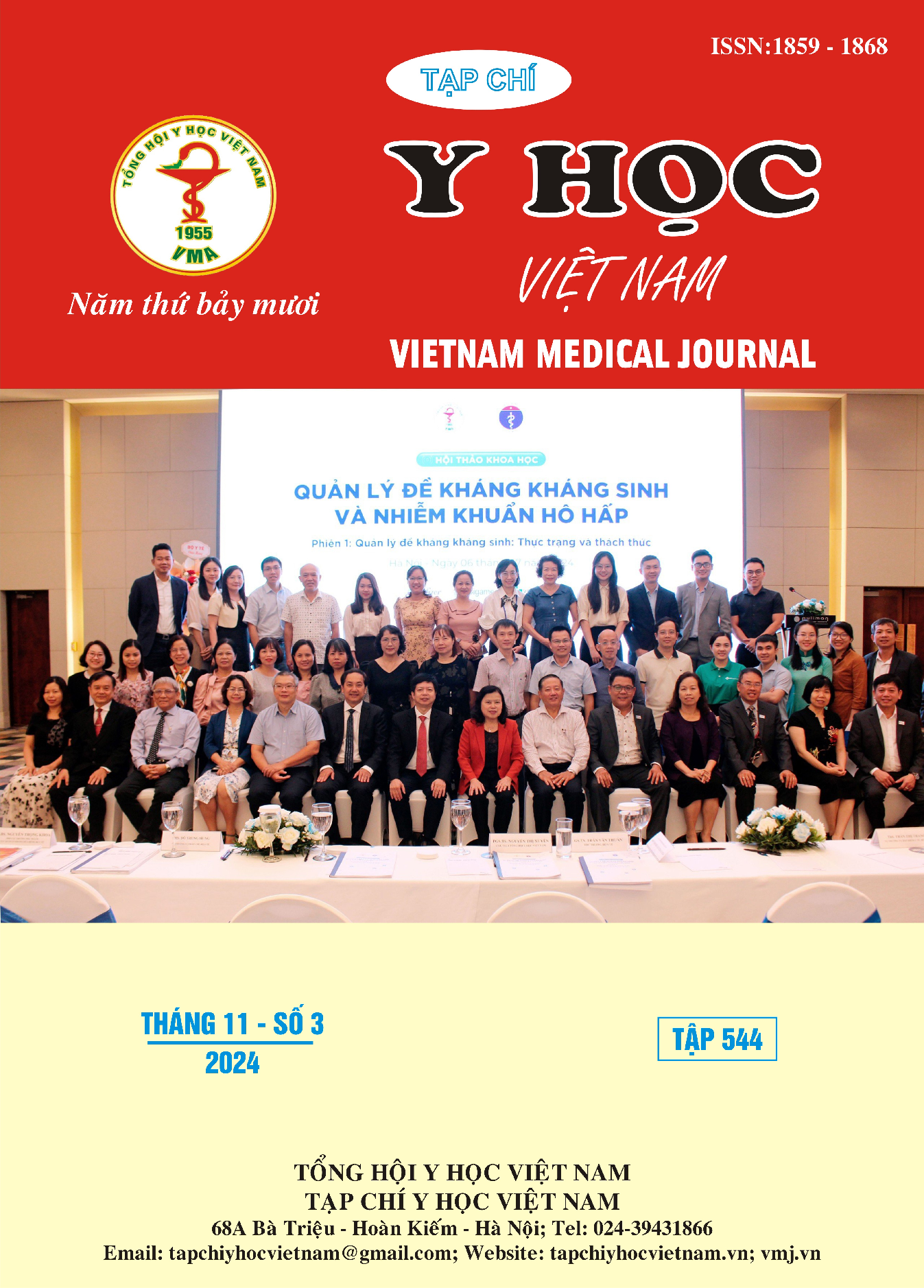REVIEW SOME CLINICAL CHARACTERISTICS, COMPUTED TOMOGRAPHY IMAGING FEATURES AND HISTOLOGY OF PATIENTS WITH THYMOMA UNDERWENT THYMECTOMY BY ROBOTIC ASSISTED THORACOSCOPIC SURGERY AT CHO RAY HOSPITAL
Main Article Content
Abstract
Objectives: To comment some clinical chracteristics, computed tomography imaging features and histology of patients with thymoma underwent thymectomy by robotic assisted thoracoscopic surgery. Patients and methods: Patients with thymoma underwent thymectomy by robotic assisted thoracoscopic surgery from 1/2020 to 12/2023 at Cho Ray hospital. Results: The ratio of female and male was 1.39 :1, the mean age was 49.42 ± 13.46 (range, 17 -72 years). Nineteen patients (44.2%) were affected by myasthenia gravis. Preoperative Perlo – Osserman class was I in 4 patients, IIA in 11 patients and IIB in 4 patients. Tumor size ≥ 5cm was in 22 patients (51.2%) and < 5cm was in 21 patients (48.8%), the mean diameter of the resected tumors was 5.08cm. The proportion of central tumor was highest (48.8%), the right side (20,8%) and the left side (30.2%). The enhanced degree was mainly medium or high (72.1%), there was only 2 patients (4.65%) with foci and 1 patient with invasion to surround organs. World Health Organization histology was lipothymoma (14%), type A (16.3%), type AB (30.2%), type B1 (9.3%), type B2 (20.9%), type B3 (4.7%) and thymic carcinoma (4.7%). Masaoka stage I (41,9%), IIA (34.9%), IIB (11.6%) and III (11.6%). There was relation between histology, Masaoka stage and contrast-enhanced degree on chest CT scans. Conclusion: The mean diameter of resected tumors in patients with thymoma underwent thymectomy by robotic assisted thoracoscopic surgery was 5.08cm, the majority was early stage (Massaoka I and II). The higher tumors have risk of malignancy, the higher were contrast-enhanced degree and the later Masaoka.
Article Details
Keywords
Thymoma; Robotic assisted thoracoscopic surgery.
References
2. Mao Z.F., Mo X.A., Qin C., et al. 2012. Incidence of thymoma in myasthenia gravis: a systematic review. J Clin Neurol., 8(3):161-169.
3. Marulli G., Maessen J., Melfi F. et al. 2016. Multi-institutional European experience of robotic thymectomy for thymoma. Ann Cardiothoracic Surg., 5(1):18-25.
4. Weng W., Li ., Meng S. et al. 2019. Video assited thoracoscopic thymectomy is feasile for large thymomas: a propensity-matched and comparison. Interactive CardioVascular and Thoracic surgery., 30: 565-572.
5. Lê Việt Anh. (2019). Nghiên cứu ứng dụng phẫu thuật nội soi lồng ngực cắt u tuyến ức điều trị bệnh nhược cơ tại bệnh viện Quân y 103. Luận án tiến sĩ y học, Học viện Quân y.
6. Tian W., Li X., Tong H., et al. 2020. Surgical effect and prognostic factors of myasthenia gravis with thymoma. Thoracic cancer., 11: 1288-1296.
7. Osserman K. E. and Genkins G. 1971. Studies in myasthenia gravis: review of a twenty-year experience in over 1200 patients. Mt Sinai J Med. 38(6): 497-537.
8. Quian L., Chen X., Huang J., et al. 2017. A comparison of three approaches for the treatment of early stage thymomas: robot-assisted thoracic surgery, video-assisted thoracic surgery, and median sternotomy. Journal of Thoracic Disease., 9(7): 1997-2005.
9. Han X., Gao W., Chen Y., et al. 2019. Relationship between computed tomography imaging features and clinical characteristics, Masaoka-Koga stages, and World Health Organization histological classifications of thymoma. Frontiers in Oncology., 9: 1-13.
10. Marx A., Chan K.C., Coindre J.M., et al. 2015. The 2015 World Health Organization classification of tumors of the thymus: Continuity and changes. J Thorac Oncol., 10(10): p. 1383-1395.


